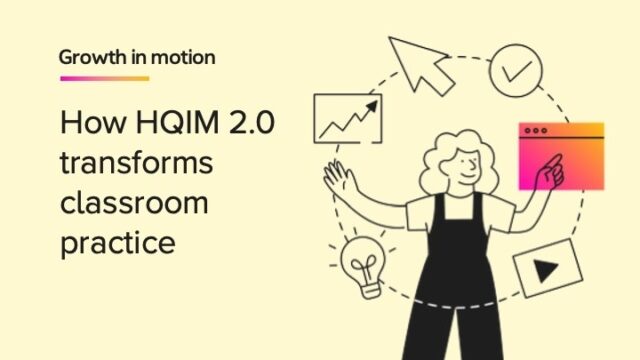
Positive Behavioral Interventions and Supports (PBIS) is a program aimed at creating a more positive school environment by teaching and motivating students to consistently demonstrate positive behavior. It can be implemented in any school, but it’s most successful when teachers are on board with it and understand its goals and objectives.
Teachers are on the front lines of the education system and should play a central role in any discussions about PBIS in schools. They are the ones who work with students daily and see the impact of reforms first-hand. However, their role is unfortunately not always closely considered when it comes to planning important initiatives, and this can have negative downstream effects on the success of those initiatives.
When a reform initiative is introduced, there are often concerns surrounding teacher buy-in and implementation. Research supports these concerns, highlighting that if teachers don’t recognize or believe in the value of a policy or reform, they’re less likely to make the necessary changes to their teaching practices.
For a PBIS initiative to be effective, getting teacher buy-in for PBIS is critical. PBIS implementation is not just a matter of teaching practices. The entire school community has a role to play in implementing your PBIS program, and the involvement of students, teachers, and administrators in the planning stage is essential for its success.
Why Is Teacher Buy-In Necessary for PBIS Programs?
Teacher buy-in is when teachers are on board with the PBIS program and understand its goals and objectives. When teachers are invested, the program can be implemented effectively and used.
To successfully implement PBIS in the classroom, teachers must understand the framework and how to implement the program with their students faithfully. If they are not on board, it will be difficult for them to engage their students and help them learn. Teacher buy-in is crucial because it sets the year’s tone and helps to create a positive learning environment. In addition, a teacher who is excited and invested in PBIS is more likely to be enthusiastic about supporting and promoting PBIS values.
A positive relationship between teachers and students can also help to create a more supportive school culture. It’s vital for everyone involved in a student’s education to be on the same page and working toward the same goals.
Benefits of PBIS Teacher Buy-In
When teachers are invested in a PBIS initiative, the school or district will see several benefits.
1. Increased Student Engagement
When educators are given the tools and training to implement PBIS properly, they often see increased student engagement.
2. Improved School Climate
With invested teachers, the school climate improves, and it shows students that the school is serious about creating a positive environment. As PBIS is implemented throughout the school with deliberate fidelity, it helps create a sense of community within the school, making students feel more connected and valued.
3. Enhanced Academic Achievement
Research indicates that PBIS improves academic achievement for all students, including those with disabilities. Many barriers to learning readiness can be overcome by teaching and learning PBIS principles. For example, a respectful and collaborative space that is free of conflict is an environment more conducive to effective learning and better outcomes.
4. Decreased Discipline Issues
PBIS can also help reduce discipline issues. That’s because PBIS sets clear expectations for behavior and a framework for dealing with negative or problem behavior, which helps mitigate these problems before they require punitive correction.
5. Reduced Teacher Stress
Teachers who believe in and use PBIS strategies experience less stress in the classroom. Training in PBIS empowers teachers, providing them with a framework of behavioral expectations and helping them feel confident in their ability to manage student behavior.
6. Improved Sense of Community
Teachers who receive training in PBIS are better equipped to handle disruptive behaviors and help troubled students get back on track. School should be a safe space for students. PBIS programs are shown to reduce instances of bullying and harassment and teach students how to work together using problem-solving and conflict-resolution skills.
Tips for Getting Teacher and Staff Buy-In for PBIS
Just as PBIS is not a one-size-fits-all approach for behavior management, there is also no uniform way of generating teacher involvement. Instead, there are a multitude of approaches that can all be layered with one another for the best fit. Together, they create a comprehensive method for ensuring successful PBIS implementation. Here are some tips on getting staff buy-in for PBIS.
1. Outline Clear Goals and Expectations
Maximizing PBIS buy-in begins with a clear understanding of the objectives. Well-defined goals allow for consistency and transparency while preventing miscommunication. This helps teachers implement a PBIS program more easily because everyone is working from the same expectations toward a common goal.
2. Provide PBIS Training
When your teachers have an in-depth understanding of PBIS, especially with respect to discipline, they’ll be more likely to implement it successfully in their classrooms. Take the time and resources to provide PBIS training and ensure it is ongoing. The more informed and competent instructors feel, the more consistent they’ll be and the less inclined they’ll be to revert to their prior way of doing things.
3. Highlight the Benefits of PBIS
When generating PBIS teacher buy-in, explaining how the program benefits educators is essential. For example, you can share data and research with teachers to highlight how PBIS promotes a better teaching environment. PBIS benefits teachers by:
- Saving them time on behavioral management paperwork
- Increasing learning times in the classroom
- Reducing teacher burnout
- Improving student engagement
- Helping teachers feel more connected to their students
- Fostering stronger relationships and a more supportive classroom climate
4. Use Data to Underscore the Need for Change
Support your school’s case for a PBIS program with data. For example, you might compare test scores and referral rates of PBIS schools to other schools in your district. You could also emphasize the improvement made by similar, preferably local schools after adopting PBIS. Doing so may shed light on a problem teachers didn’t know existed.
5. Involve Staff in the Implementation
One of the most effective ways to ensure buy-in is to make teachers part of the process. An important way you can involve teachers is by having them suggest which behaviors should receive the most emphasis in your school. If many teachers agree about this and feel they’ve had their say, they’ll be more likely to recognize and reward those behaviors.
Many schools achieve this with a PBIS school leadership team/committee consisting of a wide variety of faculty members. However, it’s a good idea to have a couple of “town hall” meetings that everyone can attend to add their two cents.
Collaborating directly with teachers in the planning phase of your school’s PBIS initiative ensures that the program is more targeted. Teachers bring unique insights to the planning process, offer vital avenues for collecting data and tracking success, and are important partners in a successful PBIS implementation.
When teachers are included in developing a PBIS program, they are also more likely to prolong their investment through the initial rollout phase. It’s especially essential to continue this collective involvement after the first wave of excitement has worn off and interest is at risk of declining.
6. Recognize Teachers’ Improvement Efforts
Highlight staff who are genuinely striving to make PBIS work. You can start with simple recognition through internal communication and in meetings, but you can also offer tangible rewards to further incentivize your staff. PBIS Rewards has a list of great ideas, but if you can create a selection of more enticing and meaningful incentives, all the better. Doing so gives you a fun way to ease the transition as instructors get used to implementing the program and enjoy rewards for doing so.
7. Highlight Positive Changes Early and Frequently
When recognizing teachers’ efforts, be sure to highlight specific achievements, such as decreased referrals or increased test scores. Better yet, if possible, focus on the positive changes in students who’ve had a history of behavioral issues, especially if they’re well-known among staff. Such examples increase faith in PBIS and are particularly helpful for warding off skepticism in the early days.
8. Make Time for Staff Concerns
Implement a way for faculty members to share their concerns about your PBIS program, where they can air their frustrations and explain where the program is working for them and where it isn’t. By allowing your instructors to openly communicate their feedback, they will feel heard. This could, for instance, take the form of the town hall meetings, one-on-one drop-in meetings, or an online forum, on which staff could even share their successes. Additionally, administrators can foster continued PBIS investment by:
- Sharing survey results and data with teachers
- Inviting teachers to participate in program updates
- Soliciting ongoing feedback from teachers on PBIS successes and challenges
9. Establish a Mentorship Program
PBIS helps to create a cultural shift in the school climate that requires a long-term commitment. When everyone becomes accustomed to a new PBIS program, maintaining teacher buy-in requires ongoing incentivization. A simple mentorship program among teachers can help establish a community of support for the continued support of PBIS. Establishing teacher PBIS mentorship can promote:
- Collaboration
- Helpful professional feedback
- Peer support
- Encouragement
10. Educate Parents and Caregivers
Be sure to educate parents and caregivers on the PBIS program at every opportunity. Not only will you clear up many misconceptions about PBIS, but you’ll also create many supporters among caregivers. Well-informed caregivers will have a better frame of reference when their child shares what they’ve been learning at school about behavior, which, in turn, can help support the child’s progress in school.
Motivating Teachers to Buy Into to PBIS
With so much already expected of teachers, it’s essential that any additional school programs or initiatives truly add value. Unfortunately, too often, programs are adopted without a clear understanding of what teachers need and how these programs will impact students. New initiatives must be collaborative efforts involving teachers and administrators from the beginning.
There is no one-size-fits-all approach to PBIS, as each school has its own unique culture, staff, and student population. Some schools need PBIS to build community, while others need it to reduce the need for discipline. PBIS initiatives are most effective when the program’s goals, expectations, and PBIS rewards are tailored to meet the specific needs of the school community. To develop a rigorous program that helps you achieve real results, you must develop a plan that creates the right incentives and addresses student needs.
When a school or district begins to plan its PBIS program, teachers are invaluable partners who truly understand how to motivate and engage their students. Including teachers in the planning process and keeping them informed should also be an ongoing part of your PBIS program. By consistently sharing the research and evidence that supports PBIS and encouraging members of your school community to share their own success stories, you can reinforce the power of PBIS to create positive change.
***
This article was adapted from a blog post initially developed by the education technology company Classcraft, which was acquired by HMH in 2023. The views expressed in this article are those of the author and do not necessarily represent those of HMH.














